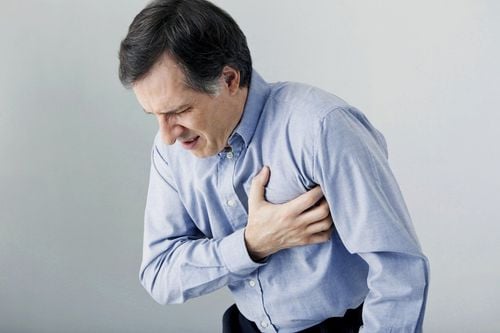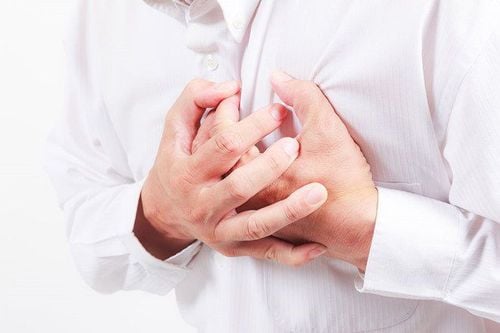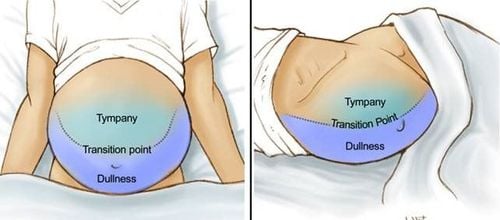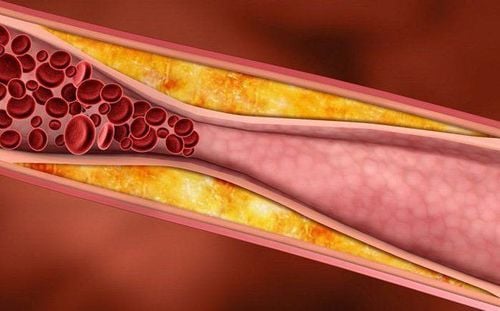This is an automatically translated article.
The article was professionally consulted with Doctor Cardiologist - Department of Medical Examination & Internal Medicine - Vinmec Hai Phong International General Hospital.
Chest pain is a dangerous disease in humans with many different signs such as: chest pain, shortness of breath, chest pain, nausea, angina, angina on both left and right sides with heart ache... Chest pain is a sign of what kind of disease? How to tell the difference between chest pain? All will be deciphered in this article.
1. Causes of angina
Angina is caused by an inadequate supply of blood and oxygen to the heart. Here are some of the main causes:
Angina due to heart disease. Chest pain due to diseases related to the pleura. Chest pain due to disease related to the chest wall. Chest pain due to diseases of the digestive tract.
2. Identify the difference in angina pain of each disease
Transient signs of angina may be caused by minor symptoms of a common illness such as indigestion. However, if chest pain occurs continuously, repeatedly with a tendency to gradually increase pain, this could be a sign of some dangerous disease. Especially angina due to cardiovascular diseases can cause high mortality.
Angina has many different pains: angina, difficulty breathing, angina nausea, left chest pain, right chest pain... So how to know which pain is a sign of what disease? Here are some common chest pain symptoms and their accompanying symptoms.
2.1. Coronary artery disease
Coronary artery disease angina is a condition in which the coronary arteries become blocked or narrowed due to plaque buildup from cholesterol (this buildup is also known as atherosclerosis). These plaques make it harder for blood to flow through them.
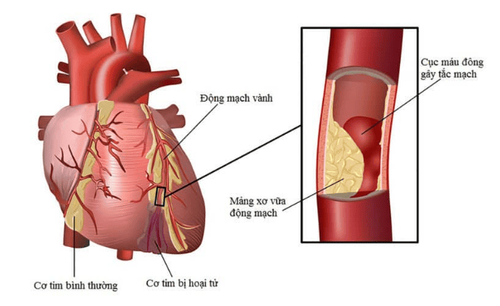
This leads to insufficient blood supply to the heart, but the blood carries the oxygen needed for the heart to function. Causes ischemia, causing patients to have angina pectoris, difficulty breathing for a few minutes, and heart throbbing. When the blood and oxygen needs of the heart are met, this pain will stop.
Angina attacks due to coronary artery disease often:
Make the patient feel like their heart is constricted, as if it is compressed and squeezed hard, making it difficult to breathe. Severe pain in the left chest, panic, sweating. The pain is usually short-lived (seconds or minutes). If the patient is too emotional, or angry, stressed or over-exercised, the pain in the left chest will be more intense. The location of the pain is usually just behind the sternum, then gradually spreads to the chin, left shoulder. A dangerous complication of angina caused by coronary artery disease is a heart attack when the pain lasts from 15 to 20 minutes, which is extremely life-threatening.
2.2. Aortic dissection disease
The aorta is the largest and most important artery in the human body, responsible for transporting blood to every organ in the body.
Aortic dissection is a condition in which the endothelium of the aorta is torn, allowing blood to flow inside. Causes ischemia, at the same time causes rupture of the aorta.
Signs of angina attacks caused by aortic dissection are as follows:
Continuous, deep and painful angina radiating to the back. Dizziness, chest pain, difficulty breathing. Fainting. This is an extremely dangerous case of angina, causing acute heart failure and very high mortality.
2.3. Diseases of the lungs and pleura

Diseases related to the lungs and pleura
Coughing a lot and coughing up blood is a sign of chest pain caused by lung diseases
Some types of lung diseases such as pneumothorax, pleurisy, lung tumor Pulmonary artery occlusion is also the cause of chest pain.
Signs:
Burning pain with breathing. Pain is worse when lying down. Severe shortness of breath. Coughing profusely and hemoptysis (most pronounced with pulmonary embolism). The patient has a fever (usually seen in people with bronchitis, herpes, pleurisy). Diseases related to the chest wall
Chest pain caused by diseases related to the chest wall such as chest trauma (localized damage to the soft tissue in the chest, damage to the ribs), disease related to the intercostal nerve ... often have the following signs:
Dull pain in the left or right chest. Pain every time the patient moves, moves the chest muscles. Pain when breathing deeply. Pain when touching or pressing on the chest wall.
2.4. Digestive tract disease
Chest pain due to diseases related to the digestive tract such as gastroesophageal reflux, indigestion... Common signs of pain related to digestion include:
Chest pain with nausea. Difficulty eating, difficulty swallowing food. Pain after eating or pain when hungry. Pain in the epigastrium or spreading to the epigastrium. Chest pain that is worse when lying down and does not improve with rest or with nitroglycerin.
The above are ways to give you a way to recognize diseases through angina pectoris, chest pain, difficulty breathing. Having knowledge about chest pain will help patients be more active in medical examination and treatment. Do not be subjective with any signs of chest pain, if there is continuous angina and the pain level gradually increases, it is necessary to immediately go to a reputable medical facility for a specialist diagnosis and treatment. timely.
Vinmec International General Hospital provides a coronary examination package to diagnose, test, and treat customers with signs of angina with throbbing, burning, and pins-and-needles sensations. The pain is located behind the sternum, in the center of the heart, left chest, spreading to the left shoulder, left arm and hand, accompanied by shortness of breath, sweating, nervousness, dizziness.






